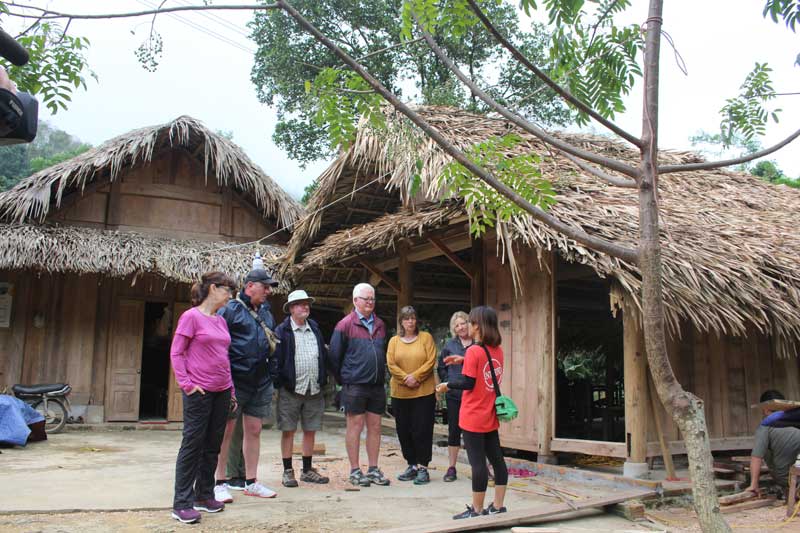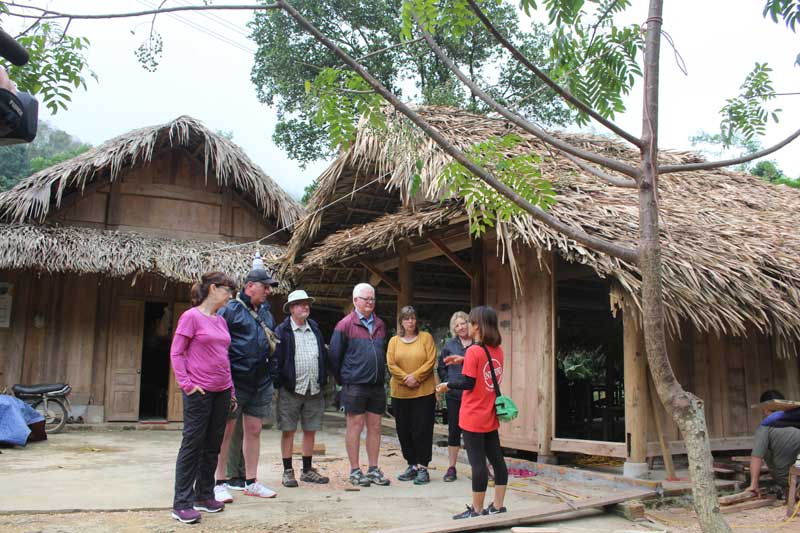


 Foreign tourists are exploring and learning
about Dao culture and customs in Sung village, Cao Son commune (Da Bac).
Foreign tourists are exploring and learning
about Dao culture and customs in Sung village, Cao Son commune (Da Bac).
Sung hamlet in Cao Son commune (Da Bac) is the home of nearly 80 Dao Tien households. The special thing when coming here is that they do not only keep the pristine, the fresh, the friendly people, but people are also impressed with the pristine rustic beauty imbued with Dao's cultural identity, from the costumes and the living activities, the traditions, the customs, the forms of cultivation and so on. In particular, this place still maintains the ground-floor houses with traditional palm-leaf roofs built together.
Mr. Ly Van Henh in Sung hamlet says that Dao Tien people often build ground-floor houses with wood-grafted walls and palm-leaf roofs. This type of house has existed for a long time, and it is very popular in the life of Dao ethnic people. They think that only live in the ground-floor houses, there is a place to worship Ban Vuong. Houses are usually simple with 3 or 5 standing compartments. How big or small they are, all follow a certain pattern, including 1 main door in the middle of the house, 1 auxiliary door on the left gable and 2 windows. 3 compartments are arranged: the left compartment is used to set the bedroom for the homeowner, the right compartment is the bedroom for children, the compartment in the middle is usually wider than the other two on the sides. It is the space for the ancestral altars and the reception.
Most of the international delegations have good impression and promise to come back with their friends. Currently, in order to serve tourists better, we have built more houses and improved the surrounding landscape to ensure hygiene. The newly built house retains its wooden walls and palm-leaf roofs, but it has been renovated with tiled floors, the bedrooms, the kitchens, the drinking tables and chairs and many items are made of wood and bamboo, creating the friendliness, the modern, clean and spacious appearance.
With the pristine natural beauty, the traditional houses of Dao people, along with the unique culture of Dao Tien people, the community tourism in Sung village has become an attractive tourism destination for visitors to travel and explore.